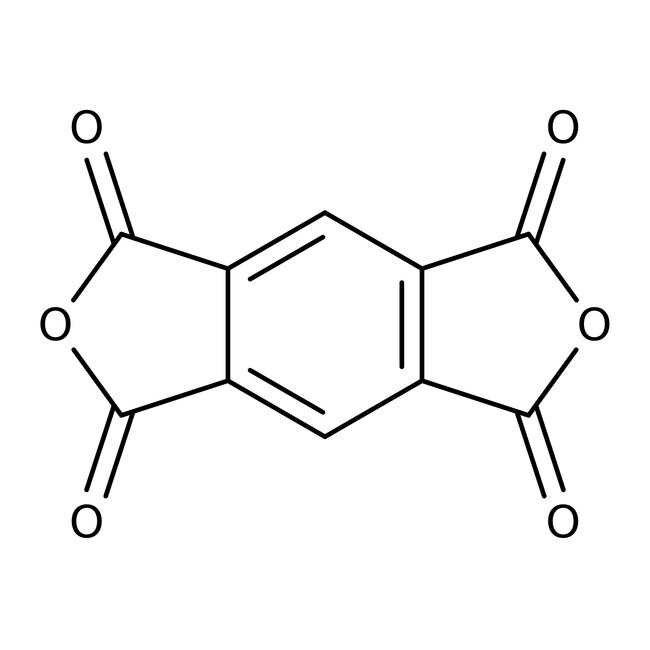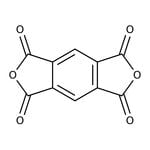Search Thermo Fisher Scientific
Dianhydride pyromellitique, 97 %, Thermo Scientific Chemicals



Dianhydride pyromellitique, 97 %, Thermo Scientific Chemicals
Identifiants chimiques
Spécifications
Description
This Thermo Scientific Chemicals brand product was originally part of the Alfa Aesar product portfolio. Some documentation and label information may refer to the legacy brand. The original Alfa Aesar product / item code or SKU reference has not changed as a part of the brand transition to Thermo Scientific Chemicals.
Dianhydride pyromellitique : employé comme monomère pour préparer les polymères de polyimide (p. ex., kapton), les thermoplastiques (p. ex., polyesters, polyéthers, plastifiants et résines époxy). Sert à la préparation de revêtements haute performance en raison de ses propriétés de stabilité mécanique, thermique et oxydative. Agit comme agent de durcissement pour les résines époxy utilisées dans les adhésifs, revêtements et poudres de moulage. Intermédiaire clé dans les matériaux à base de polyimide (p. ex., cartes à circuit imprimé, liaisons automatisées sur bande et isolation magnétique des fils).
Solubilité
Soluble dans le diméthylsulfoxyde, l’acétone, le chloroforme, l’éther éthylique, le n-hexane et le benzène.
Remarques
Sensible à l’humidité. Stockez-le dans un endroit frais. Gardez le récipient hermétiquement fermé dans un endroit sec et bien ventilé. Incompatible avec les alcools et les oxydants puissants.
Figures
Documentation et téléchargements
Certificats
Foire aux questions (FAQ)
Citations et références
Sécurité et manipulation
Classification of the substance or mixture
CLP classification - Regulation(EC) No 1272/2008
Label Elements
Signal Word
Danger
Hazard Statements
H317 - May cause an allergic skin reaction
H318 - Causes serious eye damage
H334 - May cause allergy or asthma symptoms or breathing difficulties if inhaled
Precautionary Statements
P261 - Avoid breathing dust/fume/gas/mist/vapors/spray
P280 - Wear eye protection/ face protection
P304 + P340 - IF INHALED: Remove person to fresh air and keep comfortable for breathing
P305 + P351 + P338 - IF IN EYES: Rinse cautiously with water for several minutes. Remove contact lenses, if present and easy to do. Continue rinsing
P310 - Immediately call a POISON CENTER or doctor/physician
P342 + P311 - If experiencing respiratory symptoms: Call a POISON CENTER or doctor/physician